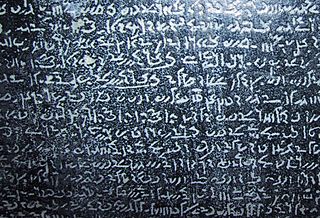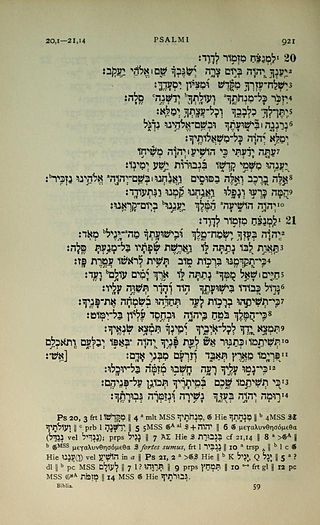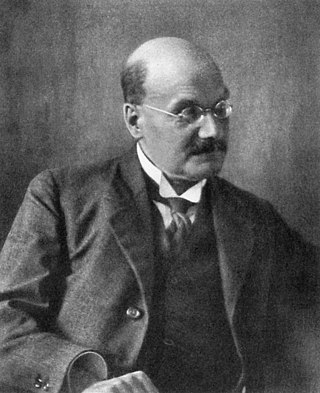Origin
Amherst 63 was originally a single papyrus scroll with a length of 12 feet (3.7 m), written on both sides. It was created by and for the Jewish diaspora communities in the Egyptian cities of Elephantine and Aswan. The homeland of this community is called rš or ʾrš in the text, which may be identical with the Rashu of Neo-Assyrian texts, a land between Babylonia and Elam. If this is correct, then the Jewish community behind the papyrus may originally have been deported by the Assyrians to Samaria. Of these groups, the Books of Kings records that they "would venerate the Lord [YHWH] but serve their own gods according to the practices of the nations from which they had been exiled," which is consistent with the polytheism expressed in Amherst 63. [7]
Amherst 63 was probably dictated in the early third century BC by an Aramaic-speaking Jewish priest to an Egyptian scribe with fourth-century training. Some of the text, however, is considerably older and must predate the Assyrian captivity in 722 BC. The compilation, however, probably post-dates 701 BC, when Sennacherib's campaign in the Levant forced many Samarians to take refuge in Aram, leading to the displacement of Hebrew by Aramaic. The last tale on the papyrus refers to the death of Šamaš-šuma-ukin in 648 BC and must have been added after that date if the entire corpus was not put together later. It may have been compiled for the inauguration of a renovated temple of Nabu in the city of Palmyra in the seventh century, the predecessor of the Roman-era temple of Nabu [ fr ].
Contents
Amherst 63 contains 434 lines in 23 columns without any clear marks of division. Richard C. Steiner thought it represented an extended liturgy for a New Year's festival. Karel van der Toorn agrees that much of it concerns a New Year's festival, but adds that it was a combination of the "rites of the year" and ḥodeš, "the new moon (festival)." Van der Toorn sees a compilation of about 35 distinct texts grouped into five sections. [13]
- The Babylonians
- "Magnificat for the Lady of the Sanctuary"
- "May the Lady Rear Her Child"
- "He Smells as Pleasant as You"
- "I Am the Cow"
- "Nabu Chooses His Bride"
- "The Judge at the Gate"
- "A Blessing"
- "Kings Saw You and Were Fearful"
- "My Gift Is for You on New Year's Day"
- The Syrians
- "They Put Their Hands in Shackles"
- "What the God of Rash Said"
- "My Servant, Do Not Fear"
- "A Dwelling for Bethel
- "Bethel's Beauty Contest"
- "Praying for Rain"
- "Hope for the Fugitives"
- "Father of the Orphan, Champion of the Widow"
- "The Lord of Thunderstorms"
- "Dreaming of the City in Rash"
- "Prayer against Enemies"
- The Samarians
- "A Desolate City under Tall Cedars"
- "May Yaho Answer Us in Our Troubles"
- "Our Banquet Is for You"
- "The Host of Heaven Proclaims Your Rule"
- In Palmyra
- "Lady, Restore Your Sanctuary!"
- "A Reign of Everlasting Peace"
- "Haddu, Bless Gaddi-El!"
- "Evening in the City of Palms"
- "Song to the Rising Sun"
- "The God Who Answers with Fire"
- "Shelter for the Samarians"
- "Nanay and Her Lover"
- "A Blessing before Bethel"
- Appendix
- "A Complaint among the Cedars"
- "A Tale of Two Brothers"
Three of the texts may be described as psalms. These are "May Yaho Answer Us in Our Troubles" (at col. xii, lines 11–19), "Our Banquet Is for You" (xiii, 1–10) and "The Host of Heaven Proclaims Your Rule" (xiii, 11–17). [14] The first of these is a polytheistic version of Psalm 20 from the Hebrew Bible. Martin Rösel has noted parallels between the second and the biblical Psalm 75.
Mar and Marah
The papyrus often uses the word Mar or feminine Marah. In some Semitic languages, including Aramaic, these words mean lord and lady. [17] [18] Van der Toorn thought some Mar references might have been added later by an imagined Aramean editor, since they seemed "burdensome" of the poem. [19]
Excerpt
| line 13 | sʾhr2ʾ ● šʾlʾḥʾ ● ṣ3yʾr2ʾk ● mnn kʾl ● ʾ2ʾr2ʾšʾH wʾmn + ṣ3pʾnʾ ● | Crescent, be a bow in heaven! [20] |
Subscript numbers indicate same consonant and different sign. For wiki formatting this excerpt shows interpunct ("●") instead of the pipe ("|") used by Van der Toorn. Context from different translation:
A Psalm from Bethel (XI.11–19)
May Horus answer us in our troubles;
may Adonai answer us in our troubles. [21]
O crescent (lit., bow) / bowman in heaven, Sahar / shine forth;
send your emissary from the temple of Arash, [22]
and from Zephon may Horus help us.

Papyrus is a material similar to thick paper that was used in ancient times as a writing surface. It was made from the pith of the papyrus plant, Cyperus papyrus, a wetland sedge. Papyrus can also refer to a document written on sheets of such material, joined side by side and rolled up into a scroll, an early form of a book.

Elephantine is an island on the Nile, forming part of the city of Aswan in Upper Egypt. The archaeological digs on the island became a World Heritage Site in 1979, along with other examples of Upper Egyptian architecture, as part of the "Nubian Monuments from Abu Simbel to Philae".

The Elephantine Papyri and Ostraca consist of thousands of documents from the Egyptian border fortresses of Elephantine and Aswan, which yielded hundreds of papyri and ostraca in hieratic and demotic Egyptian, Aramaic, Koine Greek, Latin and Coptic, spanning a period of 100 years in the 5th to 4th centuries BCE. The documents include letters and legal contracts from family and other archives, and are thus an invaluable source of knowledge for scholars of varied disciplines such as epistolography, law, society, religion, language and onomastics. The Elephantine documents include letters and legal contracts from family and other archives: divorce documents, the manumission of slaves, and other business. The dry soil of Upper Egypt preserved the documents.

Nabu is the Babylonian patron god of literacy, the rational arts, scribes, and wisdom. He is associated with the classical planet Mercury in Babylonian astronomy.
Bethel, meaning 'House of El' or 'House of God' in Hebrew, Phoenician and Aramaic, was the name of a god or an aspect of a god in some ancient Middle Eastern texts dating to the Assyrian, Achaemenid, and Hellenistic periods. The term appears in the Torah and the Christian Bible, but opinions differ as to whether those references are to a god or to a place.

Amyrtaeusof Sais is the only pharaoh of the Twenty-eighth Dynasty of Egypt and is thought to be related to the royal family of the Twenty-sixth Dynasty. He ended the first Persian occupation of Egypt and reigned from 404 BC to 399 BC. Amyrtaeus' successful insurrection inaugurated Egypt's last significant phase of independence under native sovereigns, which lasted for about 60 years until the Persians conquered the country again.

Demotic is the ancient Egyptian script derived from northern forms of hieratic used in the Nile Delta. The term was first used by the Greek historian Herodotus to distinguish it from hieratic and hieroglyphic scripts. By convention, the word "Demotic" is capitalized in order to distinguish it from demotic Greek.

The Greek Magical Papyri is the name given by scholars to a body of papyri from Graeco-Roman Egypt, written mostly in ancient Greek, which each contain a number of magical spells, formulae, hymns, and rituals. The materials in the papyri date from the 100s BCE to the 400s CE. The manuscripts came to light through the antiquities trade, from the 1700s onward. One of the best known of these texts is the Mithras Liturgy.

The Caspians were a people of antiquity who dwelt along the southwestern shores of the Caspian Sea, in the region known as Caspiane. Caspian is the English version of the Greek ethnonym Kaspioi, mentioned twice by Herodotus among the Achaemenid satrapies of Darius the Great and applied by Strabo. The name is not attested in Old Iranian.

Imperial Aramaic is a linguistic term, coined by modern scholars in order to designate a specific historical variety of Aramaic language. The term is polysemic, with two distinctive meanings, wider (sociolinguistic) and narrower (dialectological). Since most surviving examples of the language have been found in Egypt, the language is also referred to as Egyptian Aramaic.

Richard C. Steiner is a Semitist and a scholar of Northwest Semitic languages, Jewish Studies, and Near Eastern texts. His work has focused on texts from as early as the Egyptian Pyramid texts to as late as medieval biblical interpretation. He is now retired from his position as professor of Semitics at the Bernard Revel Graduate School of Yeshiva University in New York City.

Psalm 20 is the 20th psalm of the Book of Psalms, beginning in English in the King James Version: "The LORD hear thee in the day of trouble". The Book of Psalms is part of the third section of the Hebrew Bible, and a book of the Christian Old Testament. In the slightly different numbering system used in the Greek Septuagint and Latin Vulgate translations of the Bible, this psalm is Psalm 19. In Latin, it is known by the incipit, "Exaudiat te Dominus". The psalm is attributed to David. This psalm and the following one are closely related: they are both liturgical psalms: the first is an intercession, the second is a thanksgiving; in both, the king is the prominent figure.

The Story of Aḥiqar, also known as the Words of Aḥiqar, is a story first attested in Imperial Aramaic from the fifth century BCE on papyri from Elephantine, Egypt, that circulated widely in the Middle and the Near East. It has been characterised as "one of the earliest 'international books' of world literature".

Papyrus Rylands 458 is a manuscript of the Pentateuch in the Greek Septuagint version of the Hebrew Bible. It is a roll made from papyrus, which has survived in a very fragmentary condition. It is designated by the number 957 on the list of Septuagint manuscripts according to the numbering system devised by biblical scholar Alfred Rahlfs. Using the study of comparative writing styles (palaeography), the manuscript has been dated to the middle of the 2nd century BCE.

Hebrew and Aramaic papyri have increasingly been discovered from the 1960s onwards, although these papyri remain rare compared to papyri written in Koine Greek and Demotic Egyptian. The most valuable and religious texts were written on leather scrolls, parchment - such as the literary texts from Masada and Qumran, while papyrus was employed for cheaper, domestic use.

Wilhelm Spiegelberg was a German Egyptologist. He specialized in analyses of Demotic and hieratic text.

The Padua Aramaic papyri are a group of three Aramaic papyri thought to be from the 400s BCE, found in a collection of antiquities in the Italian city of Padua. The papyri are unprovenanced, but are thought to have been from Elephantine, which would make them the first Elephantine papyri and ostraca to have been discovered. They were acquired by Giovanni Belzoni in c.1815, together with a demotic letter; Belzoni presented them to the Musei Civici di Padova in 1819.

The Amherst papyri are a collection of ancient papyri now mostly kept in the Pierpont Morgan Library in New York. They were acquired by John Pierpont Morgan in 1912. They are named for Lord Amherst of Hackney, who began assembling the collection in the 1860s through purchases from R. T. Lieder and John Lee. He kept them at Didlington Hall in Norfolk.
Textbook of Aramaic Documents from Ancient Egypt, often referred to as TAD or TADAE, is a four volume corpus of Aramaic inscriptions written during the period of ancient Egypt, written by Bezalel Porten and Ada Yardeni.
















